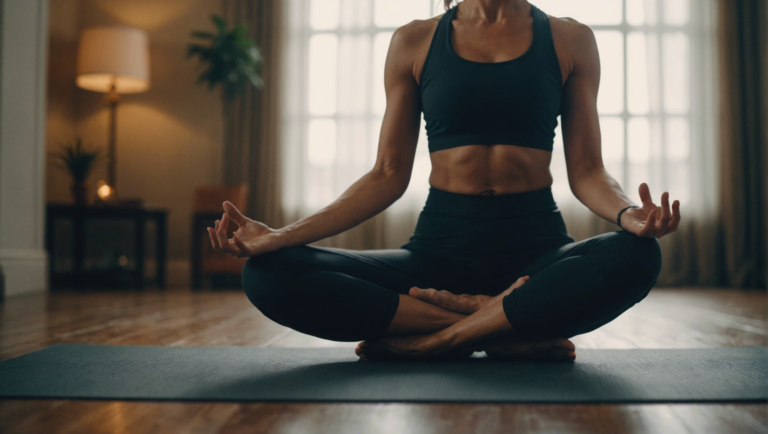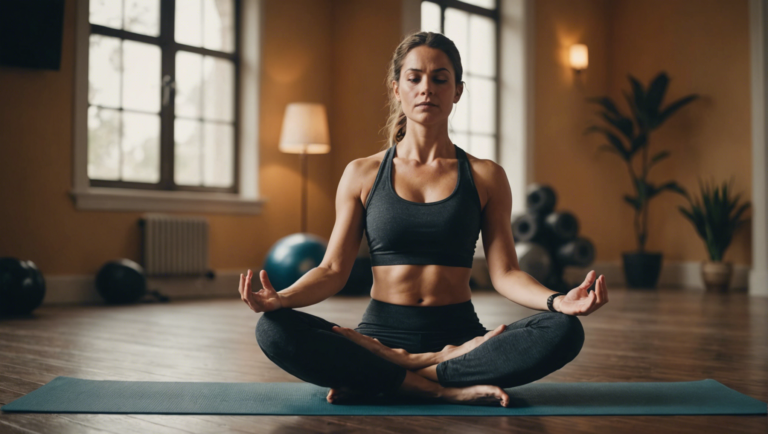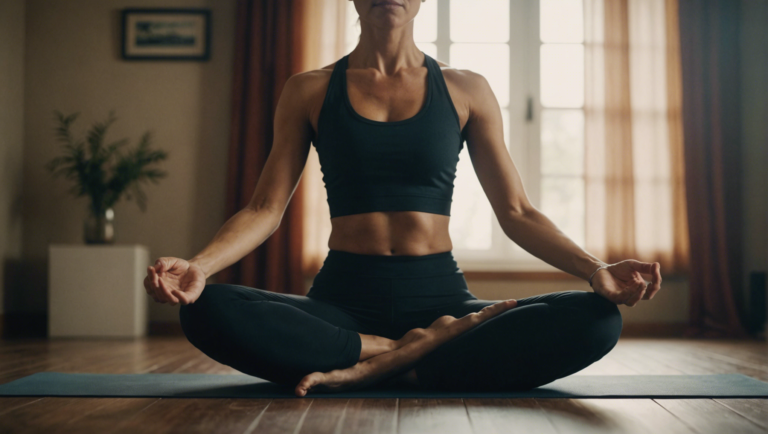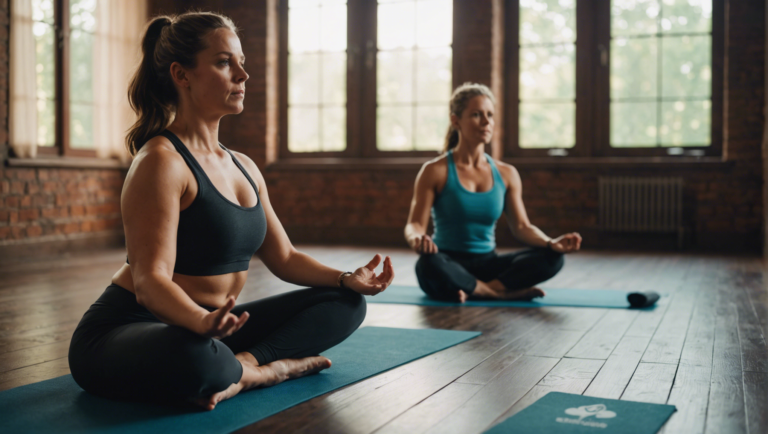Step-by-Step Guidelines On How To Draw Yoga Poses
Exploring the Benefits of Drawing Yoga Poses for Mindfulness and Body Awareness
Drawing yoga poses can be a rewarding and mindful practice that not only enhances your artistic skills but also deepens your understanding of the human body and its movements. By visually representing yoga postures through drawing, you can engage in a meditative process that fosters mindfulness and body awareness. Let’s delve into the various benefits of incorporating drawing yoga poses into your routine.
Cultivating Mindfulness Through Artistic Expression
Engaging in the process of drawing yoga poses requires your full attention and focus. As you observe the intricate details of each posture and translate them onto paper, you enter a state of mindfulness where your mind is solely concentrated on the present moment. This meditative practice allows you to let go of distractions and immerses you in the beauty of each pose, promoting a sense of calm and clarity.
Enhancing Body Awareness and Alignment
Drawing yoga poses can deepen your understanding of the human body’s anatomy and alignment. By carefully studying the structure of each posture, you become more attuned to the alignment of bones, muscles, and joints. This heightened awareness can benefit your own yoga practice by helping you improve your alignment, balance, and posture during asanas.
Strengthening Your Visualization Skills
Visualizing yoga poses in your mind and translating them into artistic representations through drawing can enhance your spatial awareness and visualization skills. This practice challenges your brain to interpret three-dimensional poses onto a two-dimensional surface, strengthening your cognitive abilities and enhancing your overall creativity.
Promoting Self-Expression and Creativity
Drawing yoga poses provides a creative outlet for self-expression and exploration. Through art, you can convey your unique perspective of each posture, allowing for personal interpretation and creativity. This process of self-expression can be therapeutic, offering a means of releasing emotions, reducing stress, and fostering a sense of fulfillment.
Connecting Art and Yoga Practices
Combining art and yoga practices creates a harmonious synergy between creativity and mindfulness. Drawing yoga poses can serve as a bridge between these two disciplines, offering a creative way to deepen your yoga practice off the mat. This integration allows you to explore the aesthetic beauty of yoga postures while cultivating inner awareness and presence.
Drawing yoga poses is not just a visual art form but a transformative practice that nurtures mindfulness, body awareness, creativity, and self-expression. By incorporating drawing into your yoga journey, you can embark on a holistic exploration of the mind-body connection and unlock new dimensions of inner growth and self-discovery. So, pick up your sketchbook, embrace the meditative process of drawing, and allow yourself to explore the profound benefits of merging art and yoga into a unified practice.
Understanding the Key Elements of Yoga Poses for Effective Drawing
Yoga poses are not only beneficial for physical health but also for mental well-being. Understanding key elements of yoga poses is essential for anyone looking to draw them effectively. By following step-by-step guidelines, you can capture the essence and form of each pose accurately. Let’s delve into the key elements you need to consider when drawing yoga poses.
The Importance of Anatomy in Drawing Yoga Poses
Anatomy plays a crucial role in drawing yoga poses realistically. To accurately depict a pose, you must have a good understanding of the human body’s proportions, skeletal structure, and muscle groups. This knowledge will help you create a sense of balance and harmony in your drawings.
Study Different Yoga Poses
To draw yoga poses effectively, familiarize yourself with a variety of poses. Each pose has its unique characteristics, such as the alignment of the body, the positioning of the limbs, and the overall flow of energy. By studying different poses, you can enhance your ability to capture their essence in your drawings.
Focus on Alignment and Symmetry
Alignment and symmetry are key elements of yoga poses. Pay close attention to the alignment of the spine, the positioning of the hips, shoulders, and limbs, and the symmetry of the pose. Drawing these elements accurately will make your illustrations more authentic and visually appealing.
Capture the Flow of Energy
Yoga is not just about static poses; it’s also about the flow of energy within the body. When drawing yoga poses, try to convey the dynamic movement and energy flow inherent in each pose. This will bring life and vitality to your drawings, making them more engaging and expressive.
Use Light and Shadow to Create Depth
Light and shadow play a vital role in creating depth and dimension in your drawings. Pay attention to how light interacts with the body in each pose and use shading techniques to add volume and form. By mastering light and shadow, you can make your yoga pose illustrations more realistic and three-dimensional.
Practice Regularly and Seek Feedback
Like yoga practice, drawing yoga poses requires dedication and consistent effort. Set aside time to practice drawing different poses regularly. Seek feedback from experienced artists or yoga practitioners to improve your technique and accuracy. Continuous practice and feedback will help you refine your skills and master the art of drawing yoga poses.
Drawing yoga poses can be a rewarding and meditative practice. By understanding the key elements of yoga poses, focusing on anatomy, alignment, symmetry, energy flow, and light and shadow, you can create captivating illustrations that capture the beauty and grace of yoga. Practice regularly, seek feedback, and enjoy the creative process of bringing yoga poses to life on paper.
Tips and Techniques for Capturing Movement and Flow in Yoga Poses Illustrations
Capturing movement and flow in yoga pose illustrations is a beautiful art form that requires a deep understanding of both the human body’s anatomy and the essence of each yoga pose. To create illustrations that truly convey the dynamism and grace of yoga, artists need to employ various techniques and tips that enhance the sense of movement and fluidity in their drawings.
Understanding the Essence of Yoga Poses
Before diving into drawing yoga poses, it is crucial to have a profound understanding of the poses themselves. Practicing yoga or studying the poses extensively can provide invaluable insights into how each pose should look and feel. This firsthand experience can significantly enhance the authenticity of your illustrations, allowing you to capture the essence of each pose more accurately.
Emphasizing Flow and Energy
One of the key aspects of depicting movement in yoga illustrations is emphasizing the flow and energy within the poses. Pay close attention to the lines and curves of the body as they transition from one pose to another. By capturing these subtle shifts in movement, you can convey a sense of dynamism and vitality in your illustrations.
Use of Dynamic Lines and Curves
Dynamic lines and curves is essential for capturing the fluidity of yoga poses. Instead of rigid, straight lines, opt for flowing and organic curves that mimic the natural movement of the body. These fluid lines can help create a sense of grace and ease in your illustrations, enhancing the overall impact of the poses.
Focus on Breath and Mindfulness
Yoga is not just about physical movement; it is also deeply rooted in breath and mindfulness. When illustrating yoga poses, try to convey a sense of breath and awareness in your drawings. This can be achieved through subtle details such as the expansion of the chest with each inhale or the grounding of the body with each exhale. By infusing your illustrations with these elements, you can imbue them with a sense of life and presence.
Experiment with Different Perspectives
To add depth and dimension to your yoga pose illustrations, consider experimenting with different perspectives. Instead of always depicting poses from a straightforward angle, try exploring side views, overhead views, or even bird’s eye views. These varying perspectives can offer unique insights into the structure and alignment of the poses, making your illustrations more engaging and informative.
Flowing Fabrics and Props
In yoga practice, flowing fabrics like scarves or props like blocks and straps are often used to enhance the beauty and effectiveness of the poses. When illustrating yoga poses, consider incorporating these elements into your drawings. Flowing fabrics can add a sense of movement and grace, while props can help emphasize alignment and support in the poses.
Capturing movement and flow in yoga pose illustrations requires a combination of artistic skill, anatomical knowledge, and a deep appreciation for the practice of yoga itself. By understanding the essence of each pose, emphasizing flow and energy, using dynamic lines and curves, focusing on breath and mindfulness, experimenting with different perspectives, and incorporating flowing fabrics and props, you can create illustrations that truly come to life with movement and fluidity. Let your passion for yoga shine through in your artwork, and you will be able to convey the beauty and grace of yoga poses with authenticity and precision.
Common Mistakes to Avoid When Drawing Yoga Poses to Enhance Accuracy
Drawing yoga poses can be a rewarding and relaxing activity, allowing you to express your creativity while promoting mindfulness. However, achieving accuracy in your yoga pose drawings requires attention to detail and practice. To help you enhance the precision of your yoga pose illustrations, here are some common mistakes to avoid.
Lack of Understanding the Anatomy
One of the most common mistakes when drawing yoga poses is a lack of understanding of human anatomy. To accurately depict yoga postures, it is essential to have a basic knowledge of the skeletal and muscular structure of the human body. Without this understanding, your drawings may lack realism and proper proportions. Take the time to study anatomy books or attend life drawing classes to improve your grasp of the human form.
Incorrect Proportions and Alignment
Another mistake to avoid is incorrect proportions and alignment in yoga pose drawings. To ensure accuracy, pay attention to the alignment of the body parts in relation to each other. Incorrect proportions can distort the pose and make it look unnatural. Use basic guidelines like the head-to-body ratio or the placement of joints to maintain proper proportions in your drawings.
Neglecting Details and Textures
Detailing and textures play a vital role in making your yoga pose drawings more lifelike. Neglecting to add details like muscle definition, facial expressions, or clothing textures can result in flat and uninteresting illustrations. Pay attention to small details that can enhance the overall visual appeal of your artwork and bring your yoga poses to life.
Overcomplicating the Background
While a well-thought-out background can complement your yoga pose drawings, overcomplicating it can distract from the main subject. Keep the background simple and minimal to emphasize the yoga pose and avoid cluttering the composition. Use subtle elements like light and shadow to create depth without overshadowing the central figure.
Lack of Practice and Iteration
Like yoga practice itself, drawing yoga poses requires consistent practice and iteration to improve. Avoid the mistake of expecting perfection from the start and embrace the learning process. Experiment with different techniques, poses, and styles to hone your skills and develop your unique artistic voice. Set aside dedicated time for practice to refine your drawing abilities.
Ignoring Reference Materials
To enhance the accuracy of your yoga pose drawings, make use of reference materials such as photographs, videos, or live models. References can provide valuable insights into the details of body positioning, proportions, and expressions that may be challenging to recreate from imagination alone. Use reference materials as a guide to capture the essence of yoga poses authentically.
By being mindful of common mistakes and focusing on improving your understanding of anatomy, proportions, details, and textures, you can enhance the accuracy of your yoga pose drawings. Remember to practice regularly, seek inspiration from reference materials, and enjoy the process of creating art that reflects the beauty and grace of yoga poses.
Advanced Strategies for Adding Detail and Emotion to Yoga Pose Artwork
Creating captivating and emotional artwork centered around yoga poses requires a deep understanding of both the physical form and the spiritual essence of the practice. To elevate your artwork and add intricate detail, follow these advanced strategies that will bring life and emotion to your yoga pose illustrations.
Research and Study the Yoga Poses
Before diving into the artwork, take the time to research and study the yoga poses you plan to illustrate. Understand the alignment, muscle engagement, and the overall flow of each pose. By grasping the intricacies of the yoga postures, you will be better equipped to represent them accurately and authentically in your artwork.
Capture Emotion through Body Language
To infuse emotion into your yoga pose artwork, focus on capturing body language. Consider the subtle nuances in body positioning, facial expressions, and the overall energy of the pose. Pay attention to details such as hand gestures, gaze direction, and the arch of the back to convey a sense of serenity, strength, or introspection within your illustrations.
Utilize Light and Shadow Effectively
Lighting plays a significant role in creating depth and mood in artwork. Experiment with different lighting scenarios to highlight the contours of the body and evoke specific emotions. Use shadows to add dimension and drama to your illustrations, enhancing the overall impact of the yoga poses you depict.
Incorporate Symbolism and Metaphors
Infusing your artwork with symbolism and metaphors can add layers of meaning and depth to your illustrations. Consider integrating elements such as nature motifs, spiritual symbols, or geometric shapes to convey a deeper message or evoke a specific emotion. Subtle touches of symbolism can invite viewers to interpret the artwork on a more profound level.
Experiment with Texture and Mixed Media
Explore different techniques and materials to add texture and visual interest to your yoga pose artwork. Incorporate mixed media elements such as collage, watercolor washes, or intricate line work to create dynamic compositions. Texture can enhance the tactile quality of your illustrations and make them more engaging for viewers.
Focus on Expressive Colors
Colors play a crucial role in setting the mood and tone of your artwork. Experiment with a palette of expressive colors that complement the emotions you wish to convey through your yoga pose illustrations. Consider the psychological impact of different hues and use color theory to enhance the overall emotional resonance of your artwork.
Seek Inspiration from Nature and Movement
Look to the natural world and the fluidity of movement for inspiration in your yoga pose artwork. Study the organic shapes, patterns, and rhythms found in nature to infuse your illustrations with a sense of harmony and grace. Emulating the flowing movements of yoga in your artwork can evoke a profound sense of connection and vitality.
By incorporating these advanced strategies into your creative process, you can elevate your yoga pose artwork to new heights, adding detail, emotion, and depth that resonate with viewers on a profound level. Embrace the artistry of yoga and allow your illustrations to reflect the beauty and spirit of this timeless practice.
Conclusion
As we conclude this journey through the art of drawing yoga poses, it becomes evident that there is a profound connection between art and mindfulness. By exploring the benefits of drawing yoga poses for mindfulness and body awareness, individuals have the opportunity to deepen their understanding of both the physical and spiritual aspects of yoga. Through the act of drawing, one can cultivate a sense of presence and focus that mirrors the meditative state achieved through yoga practice. This synergy between art and mindfulness offers a unique avenue for self-expression and self-discovery.
Understanding the key elements of yoga poses is essential for effective drawing. By breaking down each pose into its fundamental components – such as alignment, balance, and symmetry – artists can create accurate and dynamic illustrations that capture the essence of each posture. This understanding not only enhances the artistic process but also deepens one’s appreciation for the complexity and beauty of yoga as a practice.
To capture the movement and flow inherent in yoga poses, artists can employ a variety of tips and techniques. By using gestural lines, exploring different perspectives, and experimenting with shading and texture, artists can imbue their illustrations with a sense of vitality and energy. This dynamic approach to drawing yoga poses allows for a more expressive and engaging representation of the human form in motion.
While pursuing the art of drawing yoga poses, it is crucial to be mindful of common mistakes that can hinder accuracy. By avoiding pitfalls such as incorrect proportions, limited range of motion, and lack of attention to detail, artists can ensure that their illustrations are true to the essence of each pose. By remaining vigilant and receptive to feedback, artists can continuously refine their skills and strive for greater precision in their artwork.
For those seeking to elevate their yoga pose illustrations to the next level, advanced strategies offer a path towards adding depth and emotion to their artwork. By focusing on intricate details, experimenting with different mediums, and infusing their illustrations with personal expression, artists can create pieces that resonate on a deeper emotional level. These advanced strategies not only showcase the artist’s skill and creativity but also invite viewers to connect with the art on a profound and visceral level.
Drawing yoga poses is not merely a creative endeavor but a journey of self-discovery and mindfulness. By immersing oneself in the practice of drawing, individuals can deepen their understanding of yoga, cultivate a sense of presence, and express their innermost thoughts and emotions through art. Through exploration, practice, and a willingness to grow, artists can unlock the transformative power of drawing yoga poses and embark on a deeply rewarding artistic journey.



